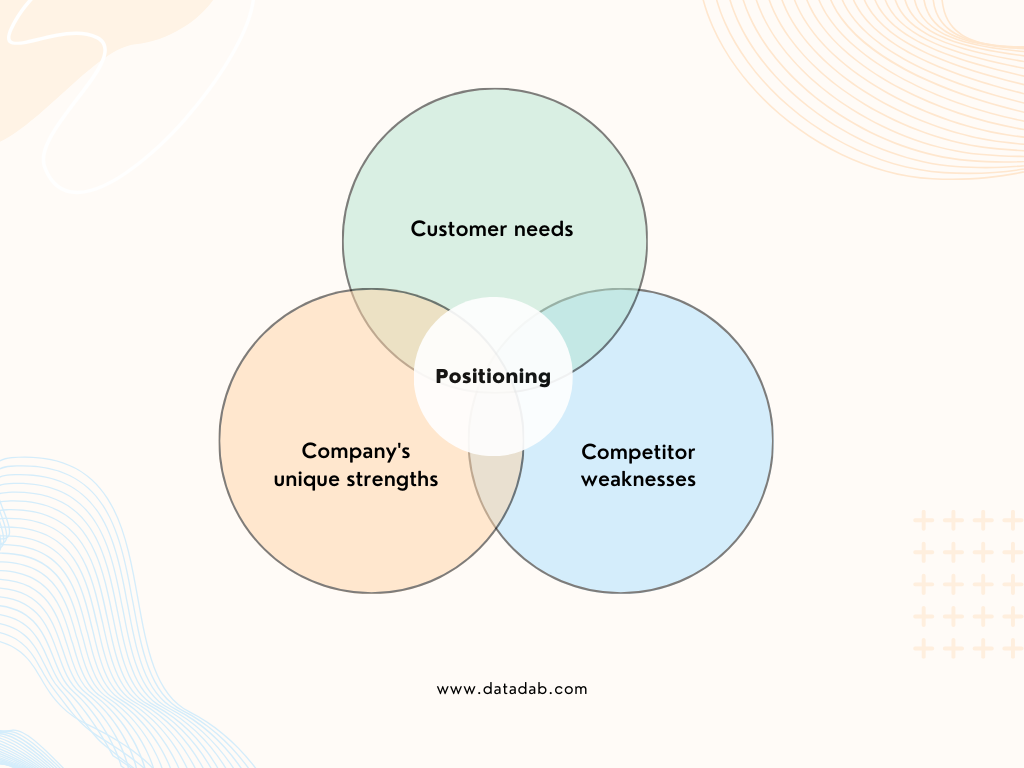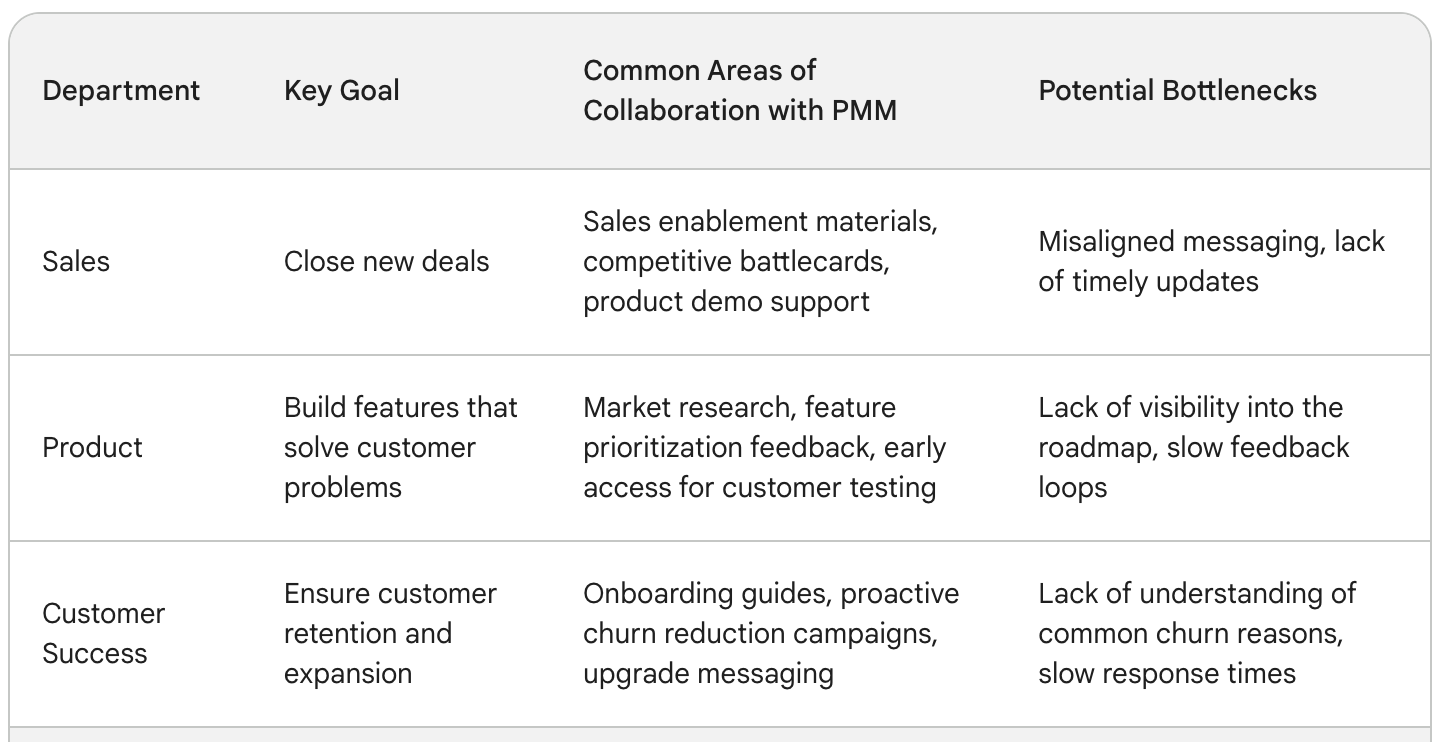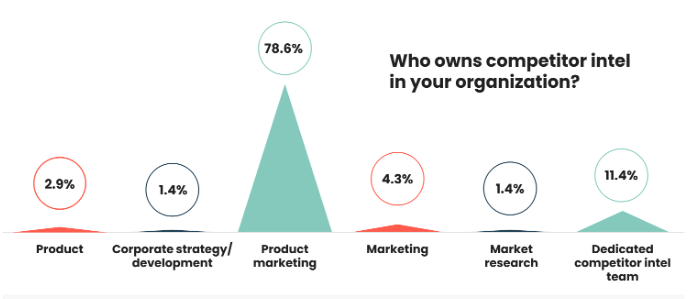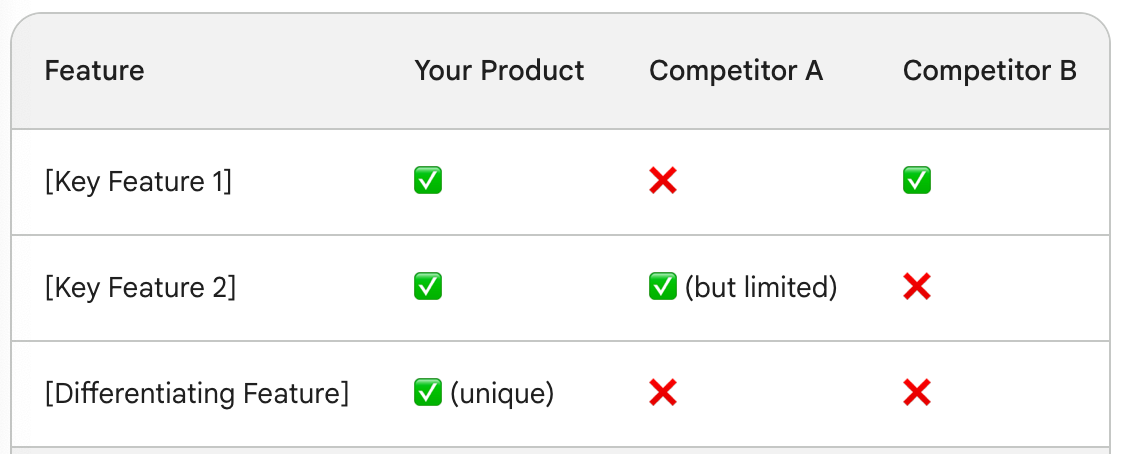I’ve run a SaaS marketing agency for nearly a decade, and I’ve helped dozens of companies hire their first, second, or tenth product marketer (PMM). I've seen the good, the bad, and the downright ugly. The thing is, finding the right person for your team is rarely as simple as just looking at a resume.
Hiring a great PMM is about identifying the traits and qualities that go beyond the standard skills listed in job descriptions. It's about understanding how marketing leaders think and the unspoken expectations they have. Through the years, I've noticed a clear pattern in what makes certain PMMs not just excel, but fundamentally transform a company's trajectory.
Let's dissect the eight most important traits:
1. Masterful Positioning

“Positioning” gets thrown around a lot, but few PMMs truly grasp its subtleties. It’s more than crafting a tagline or elevator pitch. It's about staking out a unique and compelling territory in the customer's mind.
The good: A good PMM understands how to differentiate an offering based on features, target audience, and the broader market landscape.
The great: A great PMM can weave a narrative that makes customers say, “This is the ONLY solution built for me”. They can shift perceptions and open up entire market segments by repositioning the product.
Example: Think about how Drift repositioned themselves from “live chat software” to the leaders of the “conversational marketing” category. Not only did it expand their addressable market, but it also made them the de-facto standard in a space they created.

2. Cross-Functional Influence, Not Command-and-Control

Being a PMM is a bit like being a conductor of an orchestra – you don't necessarily play the instruments, but you guide the entire performance. You have no direct authority over sales, product development, or customer success, yet your ability to work seamlessly with those teams determines the success of a launch or campaign.
The good: A good PMM knows how to collaborate and communicate with different stakeholders.
The great: A great PMM becomes an indispensable resource, earning trust by genuinely understanding the challenges of other teams. They influence through expertise, empathy, and a genuine desire to help others succeed.
Example: When Gong launched its revamped analytics, their PMM didn't just create a sales deck and call it a day. They became embedded in sales training, worked with customer success on rollout strategy, and partnered with product leaders to plan a compelling roadmap reveal.

3. Ruthless Prioritization
In an ideal world, PMMs would only work on the 'big swings' – the exciting campaigns, splashy launches, and strategic initiatives. But the reality is often filled with urgent but low-impact requests.

The good: A good PMM knows how to manage their time and say ‘no’ to some requests.
The great: A great PMM creates frameworks to make prioritization decisions easy, defensible, and transparent. They align tightly with leadership on the core goals of the business and use those as a compass when evaluating what's worth their time.
Example: Some PMMs I work with implement a simple 'Impact vs. Effort' matrix. This helps them quickly evaluate inbound requests and protect their focus for the truly transformative tasks.

4. A Bias for Action (with Data)
Analysis paralysis is a real struggle for PMMs. There's always more data to gather, more customer interviews to conduct, and more market research to do. While data fluency is crucial, it can't be an excuse for inaction.
The good: A good PMM is comfortable making informed decisions without perfect data.
The great: A great PMM has strong instincts but balances them by quickly deploying 'minimum viable tests'. They know that a few well-executed experiments will always beat months of agonizing over hypothetical scenarios.

5. An 'Audience-First' Mindset

Many PMMs make the mistake of focusing too much on the product and its features. True masters of the craft are absolutely obsessed with understanding the target customer at a deep, almost visceral level.
The good: A good PMM knows how to create buyer personas and customer journeys.
The great: A great PMM can effortlessly slip into their ideal customer's shoes. They know the customer's pain points, anxieties, aspirations, and the jargon they use. They tap into not just data, but the emotional triggers that drive purchase decisions.
Example: I once worked with a PMM marketing collaboration software to project managers. She spent weeks lurking in project management forums, reading Reddit threads, and even attended industry happy hours just to understand how PMs talked and thought.

6. The Art of Storytelling
The best PMMs aren't just marketers; they are expert storytellers. They capture attention, build emotional resonance, and make complex concepts crystal clear.
The good: A good PMM uses clear language and avoids jargon in their messaging.
The great: A great PMM infuses their work with narratives that speak to the core challenges, triumphs, and transformations their product helps customers achieve. They can paint a picture of a better future, one the customer desperately wants to inhabit.
Example: Think about how Intercom doesn't just market 'chat support'. Their messaging is centered around building human connections and moving away from the robotic, frustrating support experiences of the past.

7. Competitive Intelligence as an Obsession

Product marketing isn't just about promoting your own company; it's about understanding where you stand amidst the competition. PMMs should be ruthless about staying on top of what competitors are doing (and what they might do next).
The good: A good PMM regularly monitors competitor websites, press releases, and social media.
The great: A great PMM turns competitive intel into actionable insights. They proactively develop battlecards, train sales teams to handle objections, and influence product roadmaps by highlighting gaps the competition is exploiting.
Example: A clever PMM I know signed up for free trials of all her company's main competitors. She meticulously documented the onboarding flows, features, and pricing. This became invaluable for improving her own company's customer acquisition process.
8. A Growth Mindset
Technology and markets change at a blistering pace. The most successful PMMs never stop learning, experimenting, and evolving. They embrace the iterative nature of their work.
The good: A good PMM keeps up-to-date with industry trends and marketing best practices
The great: A great PMM isn't afraid of failure. They analyze campaigns that didn't work as well as expected and turn them into stepping stones for future success. They proactively seek out mentors and build a network of peers to share learnings with.
A Note for Hiring Managers
Don't expect every candidate to be a superstar across all eight traits. Prioritize those that are most critical to your company's stage and the specific challenges you're facing. Be wary of PMMs who talk a big game but haven't actually shipped anything substantial – look for concrete examples of their work.
And finally, remember that great product marketing is essential for any growing SaaS business. It's worth being patient and investing the time to find someone who will add strategic firepower to your team.
FAQ
1. My product marketing experience is limited. How can I still demonstrate these traits during an interview?
Focus on transferable skills and a demonstrated eagerness to learn. Talk about projects (even non-work related) where you've had to deeply understand a target audience, craft compelling messaging, or influence stakeholders without direct authority. Highlight any self-directed learning you've done on product marketing concepts or analysis of competitor strategies.
2. How can I improve my positioning skills if I'm new to product marketing?
Start by dissecting how your own company and its competitors talk about themselves. Do a deep dive into websites, sales decks, and press releases. Look for patterns in the language they use, the problems they emphasize, and the audiences they target. Then, try to re-write your company's "About Us" page in a way that's more differentiated and impactful.
3. Our company has a very complex product. How do I prioritize effectively with so many potential use cases and audiences?
Start by getting ruthless about who the ideal customer profile (ICP) is. This often requires tough conversations with leadership. Once you've nailed your ICP, focus on the 2-3 core jobs your product does best for them. Resist the temptation to be everything to everyone, at least in your initial marketing efforts.
4. How do I balance data-driven decision-making with the need to take action quickly?
Define your "good enough" data thresholds upfront. For instance, decide that after talking to 5 customers, you'll feel confident moving ahead with a new messaging direction. This prevents endless analysis. Also, embrace 'minimum viable tests'. For example, launch a basic landing page with different copy variations before investing heavily in a full website redesign.
5. I'm not a natural storyteller. How can I improve this skill?
Analyze case studies, ads, and even movie trailers that you find particularly effective. Break down why they work – is it the emotional hook? The before/after transformation? Study the structure. Then, try applying those same principles to your own product marketing materials. Start small, perhaps focusing on rewriting a single customer testimonial.
6. How can I stay on top of competitor activity without it becoming a time suck?
Set up Google Alerts for your key competitors' names. Schedule a recurring task (30 minutes every two weeks) to scan industry news sites and competitor social media accounts. Designate a section of your sales enablement materials to competitor analysis, and encourage sales reps to contribute any intel they gather in the field.
7. How can I build better relationships with other teams, especially if I'm a PMM of one?
Proactively seek to help them. Offer to pitch in on a project they're struggling with, even if it falls slightly outside your typical job description. Attend their team meetings as an observer to better understand their goals and challenges. Small acts of service go a long way in building trust.
8. What are some common mistakes PMMs make when it comes to audience understanding?
Assuming your own experience is typical of the customer's. Get out of your bubble and spend time in online communities where your target audience hangs out. Another pitfall is focusing only on feature usage data without understanding the "why" behind customer actions. Qualitative interviews are essential.
9. What are some resources (books, blogs, etc.) you'd recommend for PMMs who want to continuously learn and improve?
Lenny Rachitsky's newsletter is a must-read. Books like Obviously Awesome by April Dunford and Strategically Product Marketing provide helpful frameworks. Also, consider joining niche communities or Slack groups for PMMs where you can learn from others.
10. Besides the traits you've discussed, what's the one thing that makes a product marketer truly stand out?
Genuine curiosity. A great PMM is always asking questions, digging deeper, and seeking to understand the root cause of problems or opportunities. This translates into better positioning, more compelling messaging, and smarter go-to-market strategies.






